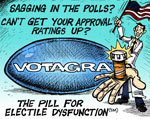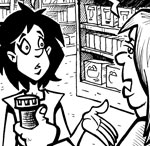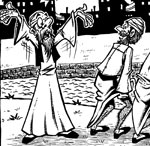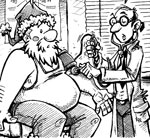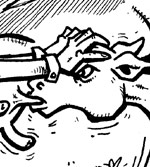Modern Applications of Frankincense for Many Aspects of Health Support
| Share on Facebook | Share on Twitter | Share on Google+ |
What is Boswellia?
In the Gospel story of the birth of Jesus, three wise men from the East appear bearing gifts, including gold, frankincense, and myrrh. Frankincense, which is also known by its modern botanical name Boswellia seratta, was important in Ayurvedic medicine 2, 000 years ago, even as it is today.
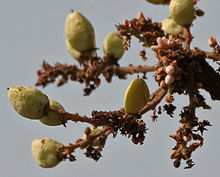
Frankincense as a Traditional Healer
Boswellia serrata, also known as frankincense, is a moderate to large branching tree that grows in arid regions of northern Africa, the Middle East, and India. Strips of bark are peeled away to expose a resin that is allowed to dry before it is collected for making herbal medicines. There are minor differences between Boswellia serrata and the Boswellia sacra species associated with the Jesus story, the Boswellia papyrifera found in Ethiopia and at one time used as alternative source of papyrus, and the Boswellia frereana sold to pilgrims in Mecca, but all are sources of boswellic acids for healing.
Boswellia benefitted Ayurvedic medicine, and later Unani medicine (Indian and Pakistani herbal medicine encouraged by Muslim rulers), as an antiseptic for treating wounds, millenniums before antibiotics were available. It was used to stop oozing from rashes and as a cough medicine. It was also used to soothe aching joints.
How Frankincense Heals
There have been about 30 laboratory and clinical studies of frankincense in relation to health conditions. The most important action of the resin is fighting inflammation, especially inflammation activated by the complement system.
A "complement" completes the activity of white blood cells. It stimulates macrophages (the white blood cells with a name that literally means "big eaters") to surround and consume whole microorganisms. It acts as a signal that attracts macrophages to the site of an infection to destroy microbes and that also attracts neutrophils to the site of an injury or infection to dissolve affected tissues.
Complement can alter the structure of viruses, make white blood cells clump around the site of an infection, or break down the cell walls of bacteria.
Usually the complement system is a good thing. In rheumatoid arthritis, however, the complement system runs amok, destroying health tissue in the lining of joints as well even in the absence of infection. Stopping the action complement stops tissue destruction.
Frankincense also contains chemicals that deactivate human leukocyte elastase, the enzyme that causes mucus to "slime" over mucous membranes in the throat and lungs. In treating upper respiratory conditions, this gives the natural processes of expectoration a chance to get rid of accumulated mucus and phlegm. Boswellia serrata side effects have never been reported, so this herb is an ideal adjunct to or even replacement for many conventional medications.
Why Frankincense Is Better for Joint Pain Relief
The action of chemicals in frankincense that stop the action of complement relieve pain and swelling in arthritic joints about as effectively as aspirin, Tylenol, Advil, and ibuprofen. Most people who take Boswellia preparations for joint pain continue to take other pain relievers. They just don't take as much. The big advantage of boswellin (the primary pain relief chemical in frankincense) over the standard pain relievers is that the other pain relievers destroy joint tissue at the same time they relieve pain.
Non-steroidal anti-inflammatory drugs (NSAIDs) interfere with a joint's ability to make glycosaminoglycans. These are the protein fibers the joints make from chondroitin and glucosamine. If you take a large amount of aspirin, Tylenol, and similar pain relievers, you will get pain relief as long as you are taking the drug, but your underlying joint problem will just get worse and worse.
Boswellin won't break down joint tissue. It won't cause stomach upset. In fact, it may heal stomach upset caused by prolonged use of other pain relievers. Combined with curcumin, zinc, and/or ashwagandha, boswellin usually offers far better relief than standard pain relievers taken alone. You will also experience less pain and more flexibility if you take the herbal preparation by itself, without any other pain relief products.
An optimal daily dose of boswellic acids is 250 mg a day. You may experience some relief if you take just 100 mg a day, but a clinical trial in India found that 250 mg a day works better than the lower dose. (On the other hand, there is no reason to take more than 250 mg a day.)
It takes about a week to start feeling results, and in the meantime, there is no reason not to continue taking your other pain relief medications. You will probably need them less and less as time goes on. Clinical studies have not found any side effects or drug interactions related to this herb.
Boswellin for Asthma Relief
Ayurvedic and Unani herbal medicine used frankincense in formulas to treat asthma that could be described as "phlegmy." It's not an ingredient that lowers an asthmatic's susceptibility to drafts, changes in temperature, cigarette smoke, or other fumes. It's more of an ingredient that helps asthmatics expectorate phlegm to clear out air passages, at least in traditional herbal medicine.
There is also a group of people who have asthma that the science predicts boswellin would help. These are the asthmatics who like potato chips, cheeseburgers, hot dogs, nachos, and similar foods. At least in laboratory studies, boswellin modulates the chemical reactions that produce the inflammatory chemicals 5-hydroxyeicosatetraenoic acid and leukotriene B4.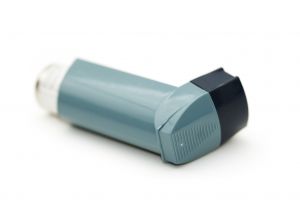
These hormone-like substances cause airway constriction. The body makes more of them when people eat diets that are high in the kinds of fat found in these common North American fast foods. At least in theory, boswellin should help reduce the effects of a junk food diet on asthma.
The scientific "proof" that boswellin helps people with asthma is, I have to admit, pretty thin. There was a study published in 1998 that compared 40 asthmatics taking 300 mg of boswellin three times a day for six weeks with 40 asthmatics taking a placebo.
Actually, both groups had people who got better (whether they were taking an herb or nothing at all) and both groups had people who had no response (which is what you would expect with the placebo). But about 70% of asthmatics who took boswellin for six weeks experienced symptom relief. That's not a magic bullet, but actually this response is about what is expected of many medications-without steroid side effects.
Boswellin and Crohn's Disease
A clinical trial at the University of Heidelberg in Germany compared treatment of Crohn's disease with either boswellin from frankincense or the prescription drug mesalazine. (This is the drug marketed as Canasa, Rowasa, Pentasa, Asacol, Lialda, Apriso in the US and Canada, Asacol, Ipocal, Pentasa, Salofalk, Mezavant XL in the UK, Australia, and New Zealand, Mesacol in India, and Salofalk in Latin America.) Both treatments worked equally well for relieving Crohn's symptoms, although boswellin did not cause as many side effects, such as the diarrhea, nausea, abdominal cramping, and flatulence often caused by the drug.
Going Beyond Boswellin for Supporting Recovery from Inflammatory Bowel Disease
Would I personally use boswellin to treat Crohn's disease, ulcerative colitis or some other inflammatory bowel disease?
Yes, but I would buy some other supplements to add to my routine.
First, I'd take a good probiotic. Frequent bouts of diarrhea, loss of appetite, and side effects of medication interfere with the absorption of nutrients from food. People with IBD are especially prone to developing deficiencies of vitamins A, B12, C, D, E, and K, folic acid, calcium, copper, magnesium, and selenium. A daily multivitamin tablet with minerals is always indicated. People who have surgery for Crohn's disease are especially likely to develop vitamin D deficiency and there is general agreement, even in mainstream medicine, that taking up to 1,000 IU of vitamin D a certainly can't hurt.
I'd also take a good probiotic supplement. At least one clinical study has found that probiotic Lactobacillus acidophilus and Bifidobacterium greatly reduce the risk of recurrence of “pouchitis,” an inflammatory condition that commonly occurs after surgery for IBD. Scientists at the University of Bologna in Italy reported that 3 out of 20 patients given probiotics suffered relapses of pouchitis over a 9-month period, whereas all 20 patients given a placebo suffered flare-ups of the condition.6 The are no contraindications for the probiotics in IBD.
Fish oil is also a good idea. Fish oil is widely recommended for treatment of IBD, and the clinical data indicate it at least prolongs remission, although it does not prevent relapses of the disease. If fishy-smelling burps are a problem, make sure you have a brand delivers at least 400 mg of fatty acids in a single capsule. This way there is simply no room for the byproducts that cause digestive upset in some brands. If you are a vegetarian or a vegan, then use microalgae or flaxseed oil. I'd take either five 1,000 mg capsules of fish oil or microalgae a day, or ten 1,000 mg capsules of flaxseed oil.
Then there's a need for vitamin E and Vitamin K. If you have inflammatory bowel disease, you probably can't get enough of these vitamins from food. Deficiencies of vitamin E and vitamin K tend to occur at the same time, and at any given time about a third of people with IBD are deficient in these two vitamins.
Vitamin K is especially likely to be depleted during treatment with antibiotics. The doses needed to prevent deficiency are so small that they are highly unlikely to interfere with any prescription drugs. Zinc supplements are frequently recommended in IBS, but zinc levels are actually above normal when the disease is active, and very few IBS sufferers are deficient in zinc.
Herbs also can help. Demulcent herbs, such as slippery elm, relieve inflammation by coating the lining of the colon and rectum. Taken as a warm tea, they do not interfere with any medications. Robert's Formula is a combination of baptisia (wild indigo), Echinacea angustifolia, geranium, cabbage powder, marshmallow root, goldenseal, and slippery elm. Available from naturopathic physicians and compounding pharmacists, Robert's Formula is both demulcent and anti-inflammatory.
And diet? Some physicians recommend medium-chain triglycerides (MCTs) as a nutritional supplement for IBD patients. MCTs are easily absorbed through the intestine and readily converted to energy, but very little MCT is stored as fat. Milk fat is a natural source of MCTs, as is butter. If you are a vegan or a vegetarian, then you might choose virgin coconut oil.
That's a whole lot more than just boswellin, but it's what you actually need. I have no doubt that if the only supplement someone took for inflammatory bowel disease were boswellin, it would probably do a lot of good, but bowel diseases benefit from broader nutritional support.
Other Potential Applications for Boswellia Serrata
Generally, I would only recommend boswellin or boswellic acids from frankincense for asthma, arthritis, and inflammatory bowel disease. There is enough scientific evidence and I've interacted with enough users to have confidence that the product works for those three conditions. There are a few more conditions, however, for which I think this herb won't interfere with treatment and is worth a try.
Psoriasis. Some research coming from China has found that, in animals, boswellic acids slow the production of a compound called NF-kappa B. This puts the breaks on the autoimmune process that causes extremely fast growth of skin in psoriasis. When the skin does not grow as quickly, there is less flaking, reddening, itching, and irritation. For this application, a salve containing frankincense will get better results than a boswellic acid supplement you take by mouth, although either probably will make a difference.
Cancer. Although I often write about natural products in the treatment of cancer, there is always a little fear in my heart-because I don't want anyone seeing just part of what I have to say about any product. Although boswellic acids and frankincense extracts are being used in laboratory experiments to stop the growth of several different cancer cell lines, there just is not enough evidence to recommend frankincense or boswellic acids as any kind of treatment for cancer-even as one supportive treatment among many others.
I hear from people who have cancers and researchers nearly every day, however, and if there are updates, I will share them. In the meantime, please feel free to post comments and questions on the Comments Page.
Selected References:
Anonymous Recommendations for the medical management of osteoarthritis of the hip and knee: 2000 update: American College of Rheumatology Subcommittee on Osteoarthritis Guidelines. Arthritis Rheum. 2000;43:1905-1915. doi: 10. 1002/1529-0131(200009)43:9<1905::AID-ANR1>3. 0. CO;2-P.
Anthoni C, Laukoetter MG, Rijcken E, Vowinkel T, Mennigen R, Muller S, Senninger N, Russell J, Jauch J, Bergmann J, Granger DN, Krieglstein CF. Mechanisms underlying the anti-inflammatory actions of boswellic acid derivatives in experimental colitis. Am J Physiol Gastrointest Liver Physiol. 2006;290:G1131-G1137. doi: 10. 1152/ajpgi. 00562. 2005.
Bellamy N, Bell MJ, Goldsmith CH, Pericak D, Walker V, Raynauld JP, Torrance GW, Tugwell P, Polisson R. The effectiveness of hylan G-F 20 in patients with knee osteoarthritis: an application of two sets of response criteria developed by the OARSI and one set developed by OMERACT-OARSI. Osteoarthritis Cartilage. 2005;13:104-110. doi: 10. 1016/j. joca. 2004. 10. 016.
Bellamy N, Buchnan WW, Goldsmith CH, Campbell J, Stitt LW. Validation study of WOMAC: a health status instrument for measuring clinically important patient relevant outcomes to anti-rheumatic drug therapy in patients with osteoarthritis of the hip or knee. J Rheumatol. 1988;15:1833-1840.
Bingham CO, III, Sebba AI, Rubin BR, Ruoff GE, Kremer J, Bird S, Smugar SS, Fitzgerald BJ, O'Brien K, Tershakovec AM. Efficacy and safety of etoricoxib 30 mg and celecoxib 200 mg in the treatment of osteoarthritis in two identically designed, randomized, placebo-controlled, non-inferiority studies. Rheumatology (Oxford)2007;46:496-507. doi: 10. 1093/rheumatology/kel296.
Caterson B, Flannery CR, Hughes CE, Little CB. Mechanisms involved in cartilage proteoglycan catabolism. Matrix Biol. 2000;19:333-344. doi: 10. 1016/S0945-053X(00)00078-0.
Chapman CR, Casey KL, Dubner R, Foley KM, Gracely RH, Reading AE. Pain measurement: an overview. Pain. 1985;22:1-31. doi: 10. 1016/0304-3959(85)90145-9.
Day R, Morrison B, Luza A, Castaneda O, Strusberg A, Nahir M, Helgetveit KB, Kress B, Daniels B, Bolognese J, Krupa D, Seidenberg B, Ehrich E. A randomized trial of the efficacy and tolerability of the COX-2 inhibitor rofecoxib vs ibuprofen in patients with osteoarthritis.Arch Intern Med. 2000;160:1781-1787. doi: 10. 1001/archinte. 160. 12. 1781.
Ethan B, Heather B, Theresa DH, Ivo F, Sadaf H, Jens H, David S, Catherine U. Boswellia: An evidence-based systematic review by the natural standard research collaboration. J Herbal Pharmacother. 2004;4:63-83. doi: 10. 1300/J157v04n02_07.
Felson DT, Lawrence RC, Dieppe PA, Hirsch R, Helmick CG, Jordan JM, Kington RS, Lane NE, Nevitt MC, Zhang Y, Sowers M, McAlindon T, Spector TD, Poole AR, Yanovski SZ, Ateshian G, Sharma L, Buckwalter JA, Brandt KD, Fries JF. Osteoarthritis: new insights. Part 1: the disease and its risk factors. Ann Intern Med. 2000;133:635-646.
Felson DT. An update on the pathogenesis and epidemiology of osteoarthritis. Radiol Clin North Am. 2004;42:1-9. doi: 10. 1016/S0033-8389(03)00161-1.
Felson DT. Osteoarthritis of the knee. N Engl J Med. 2006;354:841-848. doi: 10. 1056/NEJMcp051726.
Garnero P, Rousseau J, Delmas PD. Molecular basis and clinical use of biochemical markers of bone, cartilage and synovium in joint diseases. Arthritis Rheum. 2000;43:953-968. doi: 10. 1002/1529-0131(200005)43:5<953::AID-ANR1>3. 0. CO;2-Q.
Gottesdiener K, Schnitzer T, Fisher C, Bockow B, Markenson J, Ko A, DeTora L, Curtis S, Geissler L, Gertz BJ. Results of a randomized, dose-ranging trial of etoricoxib in patients with osteoarthritis. Rheumatology (Oxford)2002;41:1052-1061. doi: 10. 1093/rheumatology/41. 9. 1052.
Green GA. Understanding NSAIDs: from aspirin to COX-2. Clin Cornerstone. 2001;3:50-60. doi: 10. 1016/S1098-3597(01)90069-9.
Griffin MR. Epidemiology of nonsteroidal anti-inflammatory drug associated gastrointestinal injury. Am J Med. 1998;104
Gupta I, Parihar A, Malhotra P, Gupta S, Ludtke R, Safayhi H, Ammon HP. Effects of gum resin ofBoswellia serratain patients with chronic colitis. Planta Med. 2001;67:391-395. doi: 10. 1055/s-2001-15802.
Hochberg MC, Altman RD, Brandt KD, Clark BM, Dieppe PA, Griffin MR, Moskowitz RW, Schnitzer TJ. Guidelines for the medical management of osteoarthritis. Part II. Osteoarthritis of the knee. American College of Rheumatology. Arthritis Rheum. 1995;38:1541-1546. doi: 10. 1002/art. 1780381104.
Joos S, Rosemann T, Szecsenyi J, Hahn EG, Willich SN, Brinkhaus B. Use of complementary and alternative medicine in Germany - a survey of patients with inflammatory bowel disease. BMC Complement Altern Med. 2006;6:19. doi: 10. 1186/1472-6882-6-19.
Kimmatkar N, Thawani V, Hingorani L, Khiyani R. Efficacy and tolerability of Boswellia serrata extract in treatment of osteoarthritis of knee: a randomized double blind placebo controlled trial. Phytomedicine. 2003;10:3-7. doi: 10. 1078/094471103321648593.
Lalithakumari K, Krishnaraju AV, Sengupta K, Subbaraju GV, Chatterjee A. Safety and toxicological evaluation of a novel, standardized 3-O-acetyl-11-keto-b-boswellic acid (AKBA)-enrichedBoswellia serrataextract (5-Loxin)Toxicol Mechanisms Methods. 2006;16:199-226. doi: 10. 1080/15376520600620232.
Lequesne MG, Mery C, Samson M, Gerard P. Indexes of severity for osteoarthritis of the hip and knee validation-value in comparison with other assessment tests. Scand J Rheumatology. 1987;65:85-89. doi: 10. 3109/03009748709102182.
Little CB, Hughes CE, Curtis CL, Janusz MJ, Bohne R, Wang-Weigand S, Taiwo YO, Mitchell PG, Otterness IG, Flannery CR, Caterson B. Matrix metalloproteinases are involved in C-terminal and interglobular domain processing of cartilage aggrecan in late stage cartilage degradation. Matrix Biol. 2002;21:271-288. doi: 10. 1016/S0945-053X(02)00004-5.
McAlindon TE, LaValley MP, Gulin JP, Felson DT. Glucosamine and chondroitin for treatment of osteoarthritis: a systematic quality assessment and meta-analysis. JAMA. 2000;283:1469-1475. doi: 10. 1001/jama. 283. 11. 1469.
Pendleton A, Arden N, Dougados M, Doherty M, Bannwarth B, Bijlsma JW, Cluzeau F, Cooper C, Dieppe PA, Gunther KP, Hauselmann HJ, Herrero-Beaumont G, Kaklamanis PM, Leeb B, Lequesne M, Lohmander S, Mazieres B, Mola EM, Pavelka K, Serni U, Swoboda B, Verbruggen AA, Weseloh G, Zimmermann-Gorska I. EULAR recommendations for the management of osteoarthritis: report of task force standing committee for International Clinical Studies including Therapeutic Trials (ESCISIT)Ann Rheum Dis. 2000;59:936-944. doi: 10. 1136/ard. 59. 12. 936.
Reginster JY, Malmstrom K, Mehta A, Bergman G, Ko AT, Curtis SP, Reicin AS. Evaluation of the efficacy and safety of etoricoxib compared with naproxen in two, 138-week randomized studies of osteoarthritis patients. Ann Rheum Dis. 2007;66:945-951. doi: 10. 1136/ard. 2006. 059162.
Roy S, Khanna S, Shah H, Rink C, Phillips C, Preuss H, Subbaraju GV, Trimurtulu G, Krishnaraju AV, Bagchi M, Bagchi D, Sen CK. Human genome screen to identify the genetic basis of the anti-inflammatory effects ofBoswelliain microvascular endothelial cells. DNA Cell Biol. 2005;24:244-255. doi: 10. 1089/dna. 2005. 24. 244.
Safayhi H, Mack T, Sabieraj J, Anazodo MI, Subramanian LR, Ammon HPT. Boswellic acids: novel, specific, nonredox inhibitors of 5-lipoxygenase. J Pharmacol Exp Ther. 1992;26:1143-1146.
Sailer ER, Subramanian LR, Rall B, Hoernlein RF, Ammon HPT, Safayhi H. Acetyl-11-keto-b-boswellic acid (AKBA): structure requirements or binding and 5-lipoxygenase inhibitory activity. Br J Pharmacol. 1996;117:615-618.
Singh G. Recent considerations in nonsteroidal anti-inflammatory drug gastropathy. Am J Med. 1998;105
Singh GB, Atal CK. Pharmacology of an extract of salai guggal ex-Boswellia serrata, a new non-steroidal anti-inflammatory agent. Agents Actions. 1986;18:407-412. doi: 10. 1007/BF01965005.
Turner JA, Deyo RA, Loeser JD, Von Korff M, Fordyce WE. The importance of placebo effects in pain treatment and research. JAMA. 1994;271:1609-1614. doi: 10. 1001/jama. 271. 20. 1609.
Walach H, Sadaghiani C, Dehm C, Bierman D. The therapeutic effect of clinical trials: understanding placebo response rates in clinical trials: a secondary analysis. BMC Med Res Methodol. 2005;5:26-37. doi: 10. 1186/1471-2288-5-26.
Wright JM. Double-edged sword of COX-2 selective NSAIDs. CMAJ. 2002;167:1131-1137.
Zenk JL, Helmer TR, Kuskowski MA. The effects of milk protein concentrate on the symptoms of osteoarthritis in adults: an exploratory, randomized, double blind, placebo-controlled trial. Curr Ther Res. 2002;63:430-442. doi: 10. 1016/S0011-393X(02)80049-2.
-
Skin CareMen Skin Care
-
Free ResourcesFree eBooks
-
When it comes to eating right and exercising, there is no "I'll start tomorrow." Tomorrow is disease.Terri Guillemets
-
What We RecommendIf you do an analysis of the ingredients in a bottle of
 Total Balance and compare with other products you will find that it provides exceptional value for money…even against simple mass produced products with lower bottle costs.
Total Balance and compare with other products you will find that it provides exceptional value for money…even against simple mass produced products with lower bottle costs.
-





